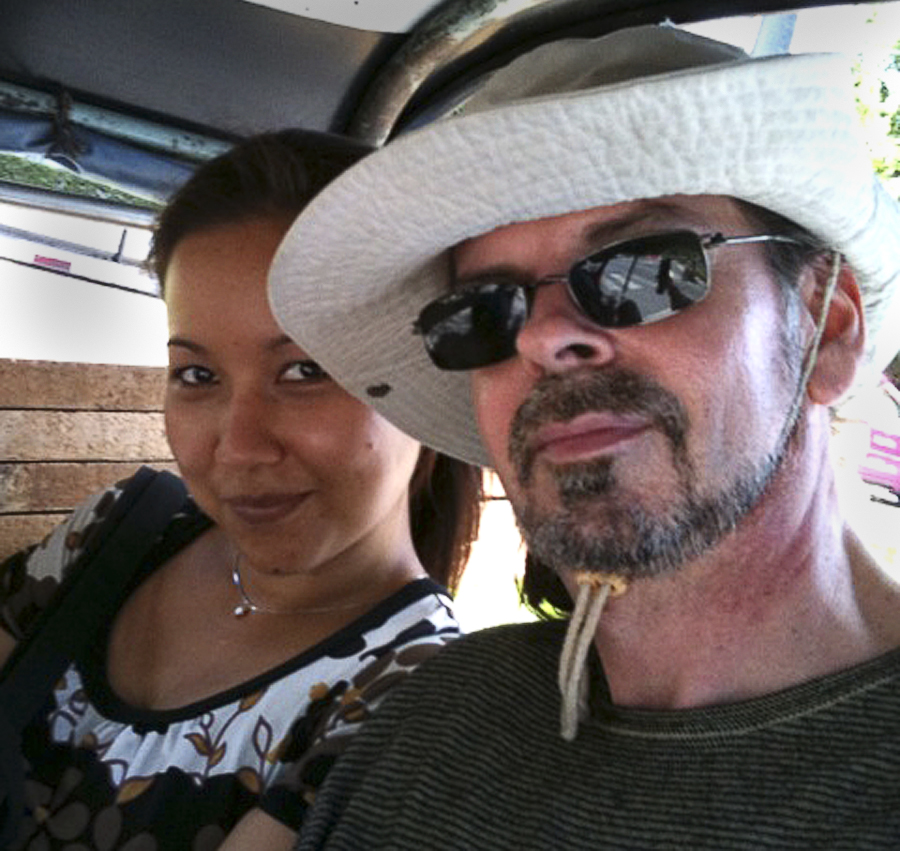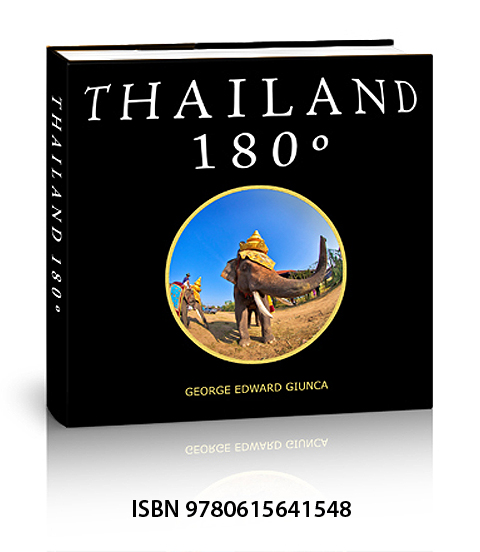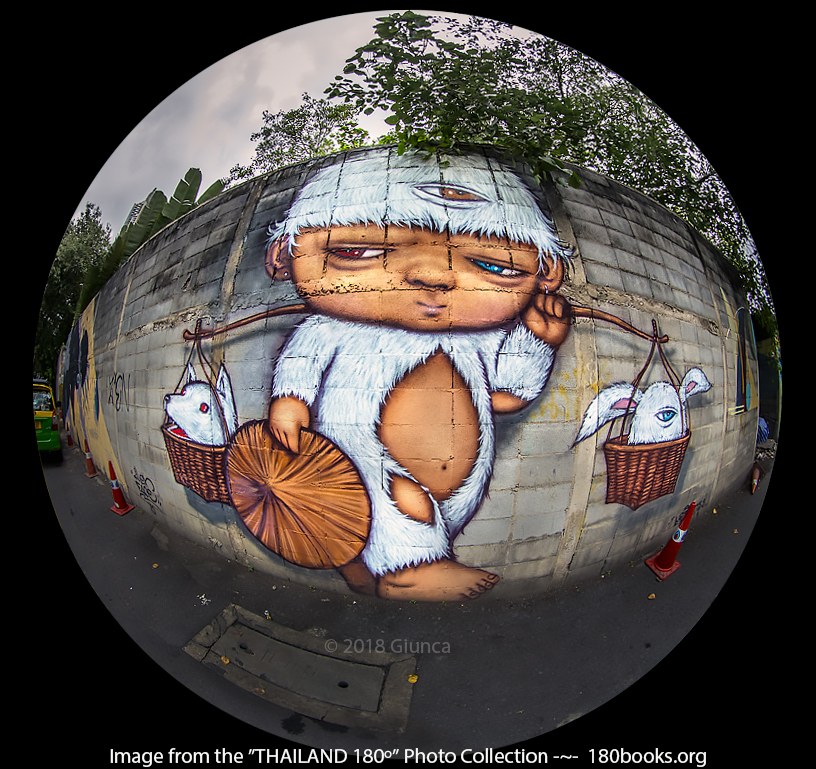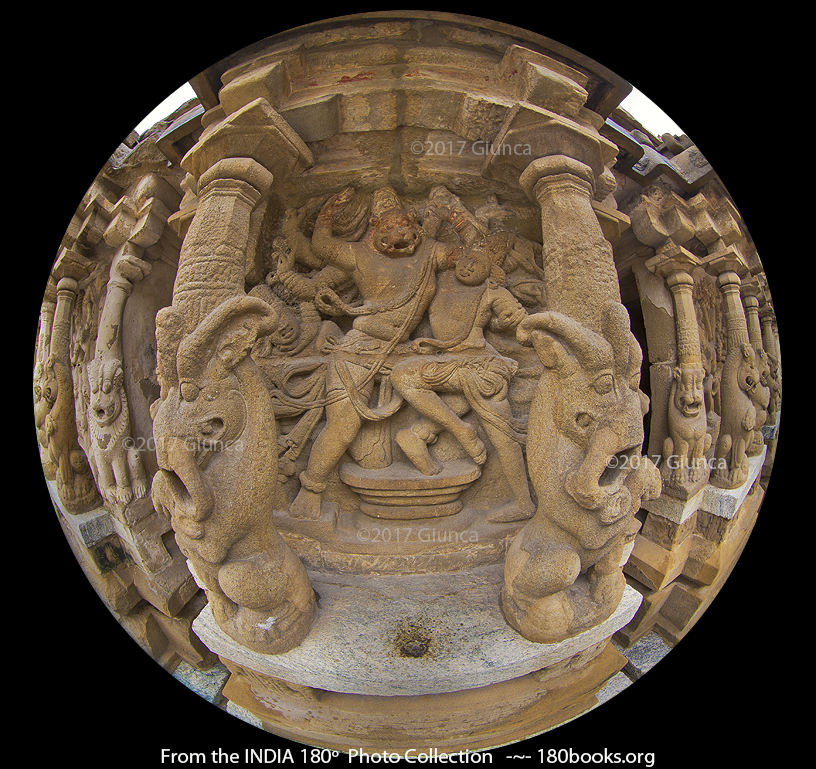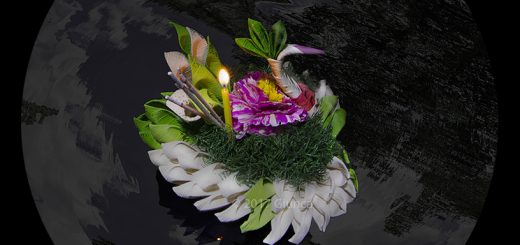4 City Pillar Shrines in Thailand that are Spectacular
What is the story behind the city pillar shrines? ~ หลักเมือง Thailand
Thai Buddhism absorbed other religions, especially Hinduism and the art and customs reflect this. Probably city pillars, called Lak Mueang or Lak Muang in Thai, can be traced to Shivaism. Remember that in Shivaism, Lord Shiva lives on Mt. Kailash, in the Himalaya mountains which are considered the center of the universe. Fon traced the word “कील” /kila/ in Sanskrit and /kil/ in Hindi which means nail or pin (Ref. HinKhoj Hindi Dictionary). The ritual of marking the city center in ancient times has become part of the tradition of Thailand, and now every province must have a city pillar.
เขียนบล็อกนี้เพราะมีความฉงนสงสัย เกี่ยวกับ “หลักเมือง”
“เสาหลักเมือง” ไม่ใช่หลักปฏิบัติหรือจารีตทางพุทธศาสนานี่นา! .. แล้วมีที่มาที่ไปอย่างไร? .. มีเพื่ออะไร .. ฯลฯ การตั้งเสาหลักเมืองนี้ดูจะออกไปทางความเชื่อและประเพณีพราหมณ์มากกว่า โดยเฉพาะไศวนิกาย ที่นับถือพระศิวะหรือพระอิศวรเป็นใหญ่ ซึ่งองค์มหาเทพหรือพระศิวะ ท่านสถิตอยู่ ณ เขาไกรลาส บนเทือกเขาหิมาลัยหรือเขาพระสุเมรุ อันเชื่อว่าเป็นจุดศูนย์กลางของจักรวาล
มีหลักฐานปรากฏเกี่ยวกับเสาหลักเมือง ในหนังสือ “วงวรรณคดี” ฉบับเดือนเมษายน พ.ศ. 2491 โดย สมเด็จกรมพระยาดำรงราชานุภาพ พระบิดาแห่งประวัติศาสตร์ไทย ทรงอธิบายไว้ ตอนหนึ่งว่า “…หลักเมือง เป็นประเพณีพราหมณ์ มีมาแต่อินเดีย ไทยตั้งเสาหลักเมืองขึ้นตามธรรมเนียมพราหมณ์ ที่จะเกิดหลักเมืองนั้น คงจะเป็นด้วยประชุมชน ประชุมชนนั้นต่างกัน ที่อยู่เป็นหมู่บ้านก็มี หมู่บ้านหลาย ๆ หมู่รวมกันเป็นตำบล ตำบลตั้งขึ้นเป็นอำเภอ อำเภอนั้นเดิมเรียกว่าเมือง เมืองหลาย ๆ เมืองรวมเป็นเมืองใหญ่ ๆ เมืองใหญ่ ๆ หลาย ๆ เมืองรวมเป็นมหานคร คือเมืองมหานคร ……. ตัวอย่างหลักเมืองเก่าแก่ที่สุดในยามประเทศนี้ก็คือ หลักเมืองศรีเทพ ในแถบเพชรบูรณ์ ทำด้วยศิลาจารึกอยู่ในพิพิธภัณฑ์สถานบัดนี้ เรียกเป็นภาษาอินเดียในสันสกฤตว่า “ขีล” (แปลว่า เสาหรือตะปู) เป็นมคธว่า “อินทขีล”…”

City Pillar of Chiang Mai, at Wat Chedi Luang (Image from the 180books.org Photo Collection by George Edward Giunca)
One of the first festivals we attended after moving to Chiang Mai was the Inthakin Festival at Wat Chedi Luang. (Take a look at the word Inthakin ~supports Fon’s theory, doesn’t it?) This is an annual festival held to venerate the city pillar, which is believed to both protect the city and bring it prosperity. Since the pavilion which contains the city pillar can only be entered by men, long tables with pedestals are set up for female devotees to place offerings. These offerings are for the city pillar, the yaksa (protecting deity), Rushi (a devout hermit), as well as the Buddha image inside the pavilion.
The present city pillar, constructed of bricks and cement is decorated with mosaic glass, and a Buddha image rests on top. Originally the city pillar was at Wat Sadue Mueang, (the Temple of the City’s Navel), but was relocated by King Kawila who also placed the Yaksa outside the pavilion in 1800. The festival has been held annually ever since.
เข้าประเด็นเลยค่ะ หลายคนคงเคยได้ยินชาวล้านนาเรียกเสาหลักเมืองว่า “อินทขีล” … ซึ่งคำว่า “ขีล” – कील /kila/ ภาษาสันสกฤต และ /kil/ ภาษาฮินดี แปลว่าตะปูหรือหมุด (ที่มา. HinKhoj Hindi Dictionary) … ยกตัวอย่าง เสาอินทขีล วัดเจดีย์หลวง จ.เชียงใหม่
เสาอินทขีลนี้สร้างด้วยอิฐโบกปูนประดับลวดลายติดกระจกสีสวยงามและประดิษฐานพระพุทธรูปปางรำพึงบนเสา โดยสมัยพระเจ้ากาวิละผู้ครองเมืองเชียงใหม่ โปรดฯ ให้บูรณะปฏิสังขรณ์ขึ้นใหม่พร้อมทั้งสร้างวิหารจตุรมุขศิลปะแบบล้านนาครอบไว้ สร้างรูปปั้นกุมภัณฑ์และฤาษี ไว้พร้อมกับเสาอินทขีล เพื่อให้ประชาชนได้สักการะบูชาในปี พ.ศ. 2343 และปฏิบัติเป็นประเพณีการบูชาอินทขีลของชาวเมืองเชียงใหม่ วิหารเสาอินทขีล เชียงใหม่ อนุญาตให้เข้าไปสักการะได้เฉพาะผู้ชายเท่านั้น

Lak Muang Shrine in Bangkok, Thailand (Image from the 180books.org Photo Collection by George Edward Giunca)
The City Pillar Shrine of Bangkok ~ เสาหลักเมือง กรุงเทพฯ
When the city of Bangkok was being planned, it was decided that a Lak Mueang had to be erected at an auspicious date and time. The location had to be carefully calculated and the ritual “Tell the Gods” had to be performed by Brahmin priests, as only they had the ability to communicate with the Gods to seek their protection for the city. First, a temple was built for the Brahmin priests for their comfort. This temple still stands today near the Giant Swing in Bangkok and is called Devasthan. After the Brahmin priests carefully calculated the location and a chart was made to determine the time. This chart was then folded and attached atop a wooden pole made from a Java Cassia tree, which was then installed at precisely 6:53 AM on April 21 in 1782.
ย้อนกลับมาที่ “เสาหลักเมืองกรุงเทพฯ” … เมื่อครั้งสร้างพระนคร สถาปนากรุงรัตนโกสินทร์ ต้องมีการประกอบพิธียกเสาหลักเมืองขึ้นในมหาชัยภูมิ โดยพราหมณ์จะเป็นผู้นำในการประกอบพิธี ทั้งการกำหนดฤกษ์ กำหนดสถานที่ และกล่าวคำประกาศเทวดา อันเป็นผลมาจากความเชื่อที่ว่าพราหมณ์เป็นผู้เดียวที่สามารถติดต่อสื่อสารกับพระผู้เป็นเจ้ารวมถึงเทวดาเทพารักษ์ให้มารักษาเมืองได้ “…พระบาทสมเด็จพระพุทธยอดฟ้าจุฬาโลกมหาราช ทรงพระกรุณาโปรดเกล้าฯ ให้พระโหราธิบดี และเหล่าพราหมณาจารย์ ปลูกโรงพิธีพราหมณ์บูชาพระผู้เป็นเจ้า ตั้งศาลบูชาเทวดาทั้ง ๘ ทิศ ทั้งศาลบูชาพระอินทร์ พระพรหมธาดา พระอิศวร (พระศิวะ) และพระนารายณ์ (พระวิษณุ) อัญเชิญเทวดาเข้าประจำการรักษาพระนคร ประกอบพิธีกลบบัตรสุมเพลิง ป้องกันเสนียดจัญไร ผูกดวงชะตาพระนคร และประกอบพิธียกเสาหลักเมือง เมื่อวันอาทิตย์ เดือน ๖ ขึ้น ๑๐ ค่ำ ปีขาลจัตวาศก จุลศักราช ๑๑๔๔ ฤกษ์เวลาย่ำรุ่งแล้ว ๕๔ นาที ตรงกับวันที่ ๒๑ เมษายน พุทธศักราช ๒๓๒๕ เวลา ๐๖.๕๔ น.” (ที่มา: http://www.devasthan.org)

City Pillar of Surin (Interior) (Image from the 180books.org Photo Collection by George Edward Giunca)
The City Pillar Shrine of Surin ~ เสาหลักเมือง สุรินทร์
The City pillar of Surin looks very plain from the outside, and it is easy to miss. Luckily we stopped to buy some BBQ pork and sticky rice from a vendor behind the shrine and decided to have a look inside. WOW! We were taken aback by the stunning beauty of the mural and design. The Java Cassia wooden pole has an intricate carving of four faces looking in the cardinal directions. We later learned that the Fine Arts Department of Thailand oversaw its creation and King Rama 9 performed rituals in Bangkok to bless the wood before it was carved.
เวลาเดินทางไปจังหวัดต่างๆ ส่วนมากก็ไปเที่ยวจึงไม่ได้มีจุดมุ่งหมายที่เสาหลักเมือง จึงอยากจะนำ “เสาหลักเมือง จังหวัดสุรินทร์” มาให้ชมเนื่องจากหลายคนเห็นภายนอกดูธรรมดาๆ ไม่ได้ใหญ่โตอลังการแต่อย่างไร …จริงเราก็ไม่ได้ตั้งใจจะมาเสาหลักเมืองเหมือนกัน แต่แวะซื้อข้าวเหนียวหมูปิ้งตรงข้างศาลพอดี เลยถือโอกาสเข้าไปไหว้ … แต่พอเดินเข้าไปภายแล้ว OMG!~ตาโตเป็นประกายมากค่ะ (ดูภาพประกอบ) อย่างแรกคือ สีที่สอดผสานได้สะดุดตา อย่างที่สองคือ จิตรกรรมไทยที่มีประณีตทุกระเบียดนิ้ว และสุดท้ายคือ เสาหลักเมือง ทำด้วยไม้ชัยพฤกษ์ แกะสลักตกแต่งด้วยเจ้าหน้าที่ของกรมศิลปากร ประกอบพิธียกเสาหลักเมือง และมีพิธีฉลองสมโภช เมื่อวันที่ 15 มี.ค. 2517 … แต่ที่สำคัญและปลาบปลื้มที่สุด คือ วันที่ 21 ส.ค. 2515 พระบาทสมเด็จพระเจ้าอยู่หัว รัชกาลที่ 9 ทรงประกอบพิธีเจิมเสาหลักเมือง ณ ตำหนักจิตรลดารโหฐาน พระราชวังดุสิต และพระราชทานพระราชดำรัสว่า “การสร้างเสาหลักเมืองนี้ดี เป็นหลักแหล่งความสามัคคี ขอให้ชาวสุรินทร์จงมีความสามัคคีกัน สร้างความเจริญก้าวหน้า และขอให้ชาวสุรินทร์จงมีความร่มเย็นเป็นสุข”

City Pillar of Surin (Exterior) (Image from the 180books.org Photo Collection by George Edward Giunca)
The outside is built in a Khmer style based on Mt. Meru. It reminded me of the Vimana or spaceship temple structures that we had observed in India. The lintel has a bas-relief depicting the Hindu God Narayana sleeping on the serpent, Sesa in the middle of the ocean of milk. Above the lintel is another carving depicting the god Indra riding his elephant, Airavata. From there going towards the top, are house motifs and the God Ganesha. At the top is a Bayon inspired face looking in four directions. It seems no one has decided exactly who this figure represents –please let me know if you have conclusive information about this. On top of this sculpture appears to be a Hindu holy water vessel. On either side of the entrance are bas-reliefs of the Hindu god Narayana and Lakshmi, again showing the level of absorption of Hinduism into Thai art.
เริ่มใหม่ๆ .. เริ่มดูกันตั้งแต่ภายนอก รูปทรงอาคารเป็นสถาปัตยกรรมขอมประยุกต์ การสร้างอาคารทรงปราสาทมาจากคติความเชื่อมาจากอินเดียที่ว่า เทพเจ้าทั้งหลายสถิตอยู่ ณ เขาพระสุเมรุ อันเป็นศูนย์กลางของจักรวาล จึงเสมือนเป็นการจำลองเขาพระสุเมรุมายังโลกมนุษย์ เพื่อเป็นที่สถิตของเหล่าเทพ โดยมีการสร้างรูปองค์เทพขึ้นเพื่อประดิษฐานไว้ ณ ตัวปราสาท เช่น ทับหลังพระนารายณ์บรรทมสินธุ์, หน้าบันเหนือทับหลังเป็นพระอินทร์ทรงช้างเอราวัณ, บันแถลงของหลักเมืองสุรินทร์นี้เป็นวิมานของพระพิฆเนศ, ส่วนยอดบัวทรงคลุ่ม ผสมศิลปะแบบบายนเข้าไป ทำเป็นรูปใบหน้าหรือพักตร์ ไว้ทั้งสี่ทิศ, และยอดสูงสุด กลศ (กะ-ละ-สะ) มีรูปร่างคล้ายหม้อน้ำเทพมนตร์ในศาสนาฮินดู เมื่อจะเดินเข้าไปภายในตัวศาล จะเห็นด้านข้างประตูทางมีลวดลายปูนปั้นพระนารายณ์ และ พระแม่ลักษมี … ***ใบหน้าหรือพักตร์ทั้งสี่ทิศนี้เป็นของผู้ใด?? ยังเป็นที่ถกเถียงกันอยู่ว่าควรจะเป็นพระพักตร์ของทิพยบุคคลองค์ใด ไม่มีข้อสรุปค่ะ***

City Pillar Shrine of Nan, Thailand (Image from the 180books.org Photo Collection by George Edward Giunca)
The City Pillar Shrine of Nan ~ เสาหลักเมือง น่าน
As we made our we around Nan, we sought out the Lak Muang which has a 200-year-old Golden Teak wood pillar. Originally, the pillar was not covered by a pavilion. A huge flood in 1961 dislodged the pillar, and it was replaced with a concrete one. Later in 1971, the shrine received a major renovation along with the Ming Muang temple in the same compound, and the original teak pillar was recarved into a four-faced design. The wooden pillar gradually became gilded with gold leaf from people who came to pay respect.
On the ceiling is a glass tile mosaic of the Brahmin universe. 12 zodiac symbols and busts of Indra’s vehicle, Airavata surround the pillar. Both the interior and exterior were designed in the Chiang Saen style. Which utilizes sculpted clay that is affixed to the wall. Wat Ming Mueang is a must-see for art lovers and photographers! You can read more about this temple and see photos here in our blog about Nan.
นานๆ มา น่าน สักที … คราวนี้ตั้งใจมา “เสามิ่งเมือง ณ วัดมิ่งเมือง” เสาหลักเมืองของจังหวัดน่านนี้มีอายุสองร้อยกว่าปีแล้วค่ะ เดิมเป็นท่อนไม้สักทองขนาดใหญ่ หัวเสาเกลาเป็นรูปดอกบัวตูม ตัวเสาฝังลงกับดิน ไม่มีศาลาหรือหลังคาครอบแต่อย่างใด ต่อมาในปี พ.ศ. 2506 เกิดน้ำท่วมไหลบ่าทะลักถึงในเมือง ทำให้เสาหลักเมืองโค่นล้มเพราะรากเสาผุกร่อนตามกาลเวลา ต่อมาได้ทำเสาหลักเมืองน่านจำลองขึ้นด้วยการก่ออิฐถือปูนขึ้นในสถานที่เดิม … ครั้นถึงปี พ.ศ.2514 จึงมีการปฏิสังขรณ์ครั้งใหญ่ โดยร่วมกันสร้างศาลาไทยจัตุรมุขครอบเสาหลักเมืองขึ้นใหม่ และได้นำเอาเสาหลักเมืองน่านที่เป็นไม้สักทองต้นเดิมที่โค่นล้มลงนั้น มาเกลาแต่งใหม่และสลักหัวเสาเป็นพระพรหมสี่หน้า ฐานประดับด้วยไม้แกะลวดลายลงรักปิดทอง … เหนือขึ้นไปบนเพดานจะเห็นว่าตบแต่งกระจกโมเสกสมมติเป็นศูนย์กลางจักรวาลตามคติพราหมณ์-ฮินดู รวมทั้งเศียรช้างเอราวัณ และ จักรราษี ซึ่งทั้งภายในและภายนอกประดิษฐ์ลวดลายปฏิมากรรมปูนปั้น โดย สล่า (ช่าง) สกุลเชียงแสนโบราณ
Art, culture, and religion developed in Thailand together and simultaneously. Thailand absorbed and adapted various rituals, languages, and beliefs from other cultures. This integration may baffle first-time visitors to the kingdom, but in the end, it’s the way Thailand has woven its diversity and developed a culture all its own that makes it a wonder and joy to visit.
ถึงตรงนี้คงสังเกตเห็นว่า ศิลปะ วัฒนธรรม และศาสนา ส่วนมากก็มาพร้อมๆ กัน ไทยเราก็รับเข้ามาผสมผสานดัดแปลงและปฏิบัติกันสืบมาในรูปแบบประเพณี พิธีกรรม ภาษา ศรัทธาและความเชื่อ หากแต่ควรพิจารณาแยกแยะให้ทราบที่มาที่ไป ไตร่ตรอง เพื่อตนจะได้เคารพสักการะปฏิบัติอย่างถูกต้อง ไม่งมงายและก็ไม่ลบหลู่นะคะ ความรู้เล็กๆ น้อยๆ ที่นำมาแชร์นี้เพื่อให้ทุกคนสักการะบูชากราบไว้หลักเมืองกันอย่างมีสติ และ ชื่นชมความงดงามของศิลปะ รวมถึงนัยยะที่แฝงอยู่.
!!..คลิ๊กแผนที่..!! ดูภาพสวยๆ อ่านบล็อกสถานที่ท่องเที่ยวจาก THAILAND 180º ได้นะคะ อัพเดทเพิ่มเติมตลอดค่ะ
We had to eliminate the ability to comment from this wordpress site due to excessive spam. If you enjoyed this story, subscribe using the “Subscribe” button below, or visit our facebook fan page to comment Here
We’d LOVE to hear from you!
ผู้ติดตามอ่านบล็อก สามารถติดตามอัพเดทโพสต์บล็อกได้โดยสมัครสมาชิกที่บล็อกนี้ หรือ กดไลค์เฟสบุ๊คเพจของเราที่นี่ Here
Blog : Thai by Apisatha Hussadee Giunca
Blog : English by George Edward Giunca
About the Authors
Photographer George Edward Giunca, and his Thai wife, Apisatha, have traveled around Thailand armed with a circular fisheye lens to create a photo essay on the rich cultural diversity, and abundant natural beauty of the Kingdom of Thailand. Fleeing from angry water buffaloes, slapping huge mosquitoes, watching exotic festivals and religious rituals, gorging on delicious spicy food, applying aloe vera cream to sunburned skin, wading through rice paddies, getting drenched to the bone by heavy monsoon rains, and gawking at breath-taking scenery; made it a journey of epic proportions! The result is the book, THAILAND 180º. Later, they traveled extensively through Myanmar, Malaysia, and India, gathering a massive collections of 180º photos. They currently live in Chiang Mai where they continue to blog and are now working on a CHIANG MAI 180º book.
Get 15% Off our THAILAND 180º book when you Order from Amazon before January 1, 2018 and enter the code: 37QTC3VO at Checkout
Here’s How to Order Your Copy of THAILAND 180º Collectors EditionToday!
In Thailand —>>>http://www.thailand180.com/thaiorder.html
The Rest of the world: We are offering our book on Amazon.com, below list price and I’ll pay for the shipping within the United States! http://amzn.to/1knDPRR
Not Familiar with Our Book???
This show details the origin of 180 Books, a series of art/travel books illustrated with a circular fisheye lens. By using infographics, pictures from our THAILAND 180º book, and never seen before images from our vault, we’ll demonstrate this unique lens and present our unique books.
Also, because there’s nothing to watch on TV, here’s a trailer about our book, “THAILAND 180”


